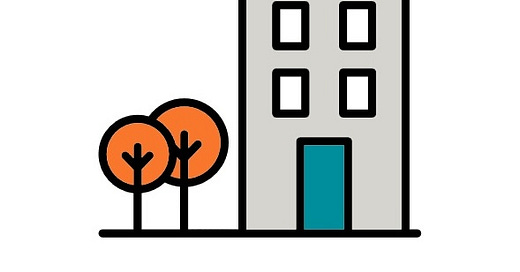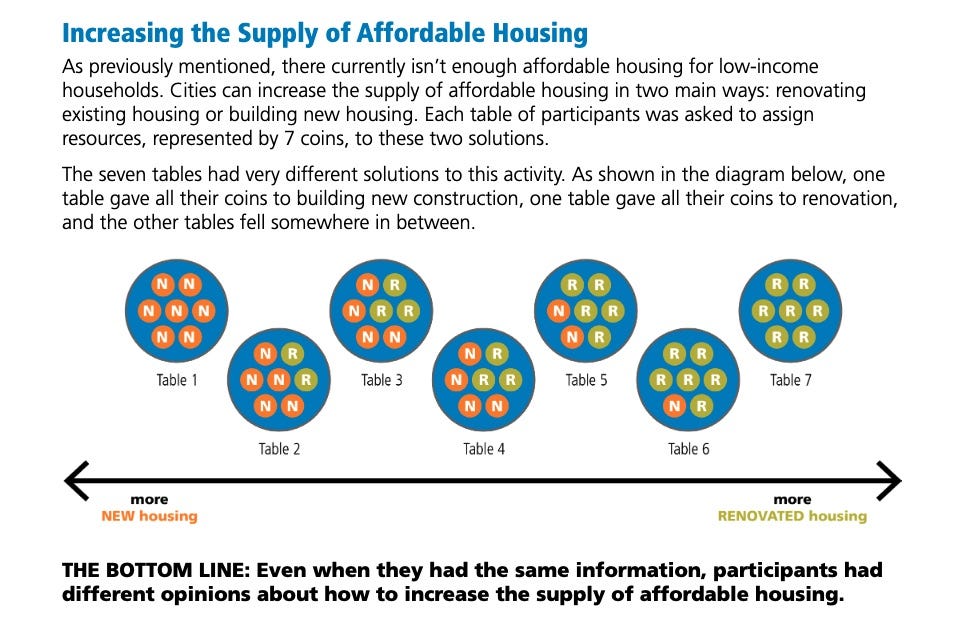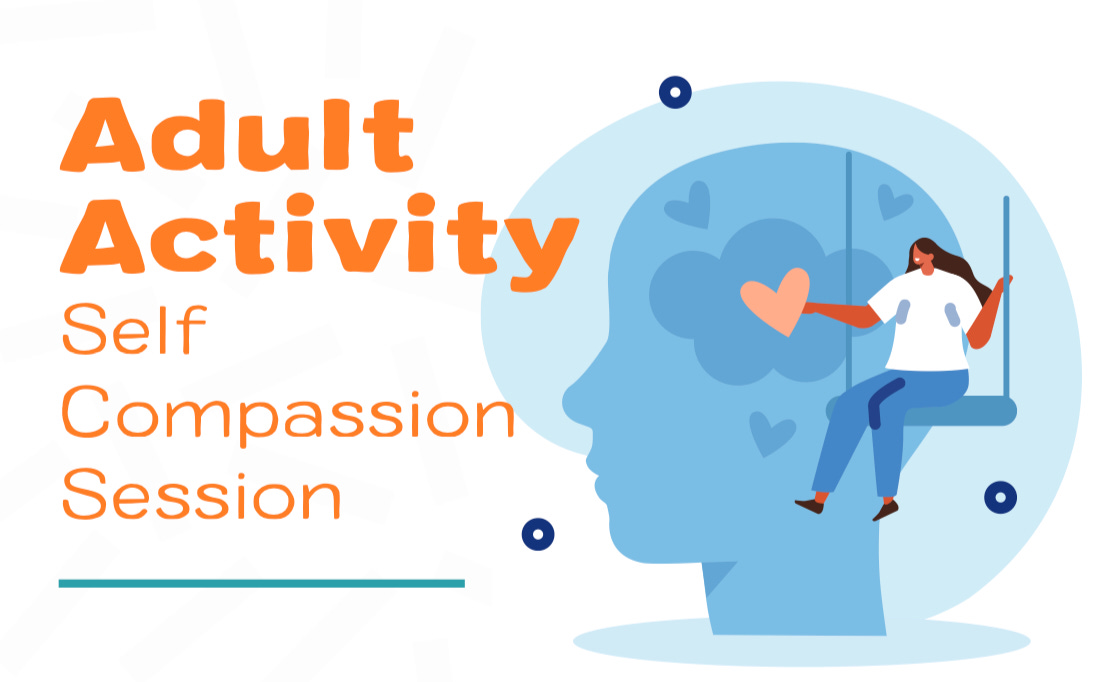Last winter, I wrote about the Mount Desert Island Historical Society’s ongoing collaborative work on climate literacy and action in its Landscape of Change project. Today’s focus is a bit of a flip on that scenario, a science museum working in a realm seemingly more aligned with the mission of a humanities-focused museum. In this case, the Museum of Life and Science (MLS) in Durham, North Carolina is using a community engagement with science project to focus on housing and the factors leading to homelessness.
What I love, aside from the fact that these are both super cool projects worth emulating, is that they prove how wide a museum can reach into the future of its community while still delivering on its core mission and vision. I am indebted to Max Cawley, the Director of Climate Research and Engagement at MLS, who shared resources, photos, and time on Zoom to fill me in on details about the project.
Community-Driven, Civically-Focused Science
The Museum of Life and Science is one of four museums participating in the National Science Foundation-funded project Building Capacity for Co-Created Public Engagement with Science (DLR-1811118) (CC-PES) led by the Museum of Science, Boston. In this case, the particular flavor of Public Engagement with Science is public forum dialogs about socio-scientific questions, which the project team define as questions that are “informed but not answered by science alone, and [that require] inclusion of social values, norms, and personal experience.” (To my mind, this fits just about every topic at the intersection of museum and planning practice.)
The “co-creation” part of the project came from each museum’s partnership with a community organization, which drove the selection of the specific socio-scientific question to be investigated. The ultimate goal of the public dialog forums was to empower the participating people and organizations to take action to shape policy related to the question(s) being explored. Therefore, each project also had a civic partner, typically a city department.
Affordable Housing Community Conversations
The Museum of Life and Science’s civic partner was the Equitable Engagement Team of Durham’s Neighborhood Improvement Services Department. Its community partner, Families Moving Forward (FMF), is a long-standing museum partner that provides emergency housing and wrap-around services to families experiencing homelessness. Brainstorming with its partners, the museum produced a shortlist of potential project topics: gun violence, urban greening, education reform, and affordable housing, ultimately settling on housing.
As the museum’s Max Cawley notes, affordable housing is a huge topic, so the next task was selecting a specific focus within the housing issue. It was important to the FMF participants that the project help destigmatize being homeless and to counter the perception that “homeless” is a personal identity, rather than a circumstance. So, education about the forces and circumstances leading to homelessness was a bedrock concept for the dialog curriculum.
Further, for the CC-PES project and for all three Durham partners, it was important that participants in the community forums leave with local civically actionable knowledge. This ruled out some project foci, such as rent control, because it is disallowed by state law. As the partners co-created the curriculum for the public dialogs, they discovered a dearth of introductory-level information about affordable housing issues, giving the dialogs an opportunity to fill that void. They developed a two-hour dialog curriculum consisting of four game-like modules.
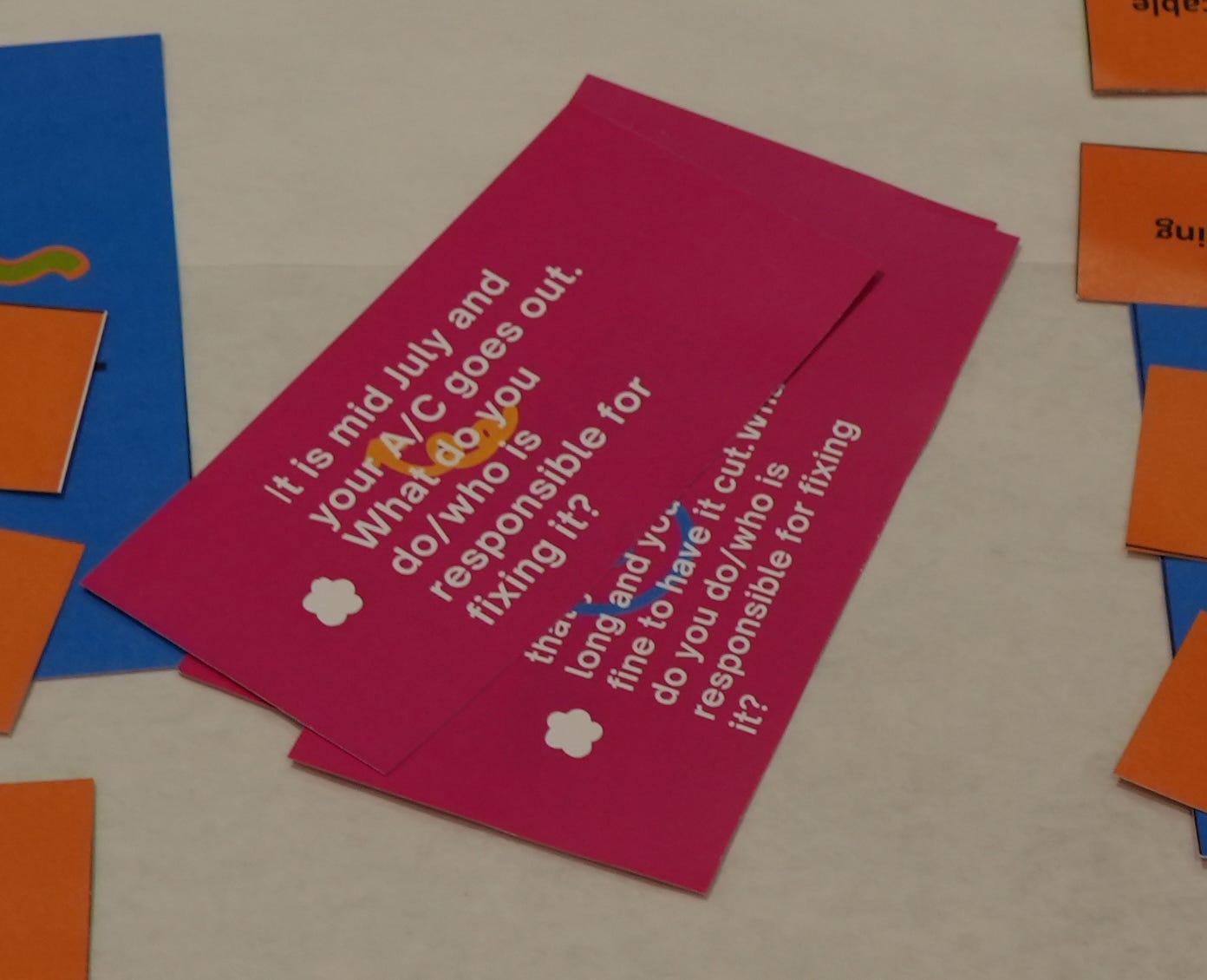
In two modules, participants try to discern what information can and cannot be required on housing applications and in lease agreements. As participants pore over a sample application and lease, people are surprised by what rights tenants do and do not have under the law. They then discuss whether and how they want existing policies and regulations changed.

The third module focuses on a fundamental affordability issue: an overall lack of housing stock and limited investment dollars. In the activity, (summarized in the image below) participants have to decide how much to investment in renovating existing housing stock (“R”) or in building new housing (“N”), spending poker chips on one or the other through seven rounds. Each round introduces new outside information – voices (pulled from social media) of different local affinity groups weighing in on the issue.
In the fourth and final module, participants use a number line to explore the multiple definitions of housing “affordability.” (Spoiler alert: legal definitions of affordability don’t align at all with our common-sense definitions.)
The museum then iteratively prototyped the activities with people in five different venues: the museum, Durham Central Public Library (across the street from FMF), the Hayti Cultural Center, North Carolina State University, and a local elementary school.
Takeaways
Like every project that I showcase, there are some takeaways that can be applied to other projects.
Partners – Front and Center
The museum had a long-standing relationship with Families Moving Forward well before the start of the project. The continued strength of the relationship comes from the museum staff following FMF’s long-established processes for working with its clients, rather than imposing their own procedures. This starts with museum staff members receiving trauma-informed care training led by FMF’s Executive Director, Tasha Melvin.
From there, the museum engaged in repeated deep listening sessions with FMF clients to identify the topic of housing and the specific focus of the activities, essentially saying “Here's what we think we heard from you last time. Tell us where we're mishearing, tell us where you can build off of this.” With the transient nature of FMF’s clients as they moved into more secure housing, this meant covering the same ground multiple times, but it also meant that common themes could emerge. As Cawley notes, “we wanted to engage them as active designers of the curriculum.” (And yes, the museum compensated participants for their time and contributions.)
“To create a place of lifelong learning where people of all ages embrace science as a way of knowing about themselves, their community, and their world.”
~ Museum of Life and Science Mission
Ties to the Humanity of the Mission – and of the Participants
At the project start, museum staff explained to the Families Moving Forward participants that the project should be about a topic that was important to them. But it also took the museum explaining its very broad definitions of science and community-driven inquiry. Housing and gun violence don’t necessarily spring to most minds as “science topics”, so it was essential for the museum to emphasize that any topic was fair game, as long as there was an opportunity to answer their questions through data and science (including the social science). The brilliance of this is that it emphasizes the museum’s commitment to centering the interests of the participants while also addressing a common issue in science education – overcoming people’s often narrow definition of science and the common self-perception that “I’m not a science person.”
Similarly, the museum’s curriculum recognizes the forum participants as whole humans: as individuals, family members, and community members. Because the museum’s partner specifically serves families experiencing homelessness, it created a Science Together Guidebook with the subtitle “an exploration of housing, family, and self.” After explaining the purpose of the larger CC-PES project and thanking the participants for their time, the first activities are mindfulness exercises accompanied by a description of their health benefits. Additional mindfulness activities are sprinkled throughout the rest of the booklet, which is filled with a story and activities for children to do on their own or with their grown up that explore the concept of fair housing.
Knowledge Really is Power
The museum is still wrapping up evaluation on the project. And the forum structure and toolkits may well evolve as they are used with more groups. However, the evaluation of the impact on participants is impressive.
Sixty-one out of 104 forum participants completed a survey which examined changes in participants, and two really stood out to me:
Empathy: 99% of the surveyed participants said they learned about views different from their own. Squinting at the graph, it looks like close to 70% strongly agreed with the statement “I learned about views different than my own.”
Agency: 90% of participants reported feeling more confident to get more involved in solving local housing issues, which was measured increased ability to: learn more, to share one’s views with stakeholders, take action, and/or contribute to public policy.
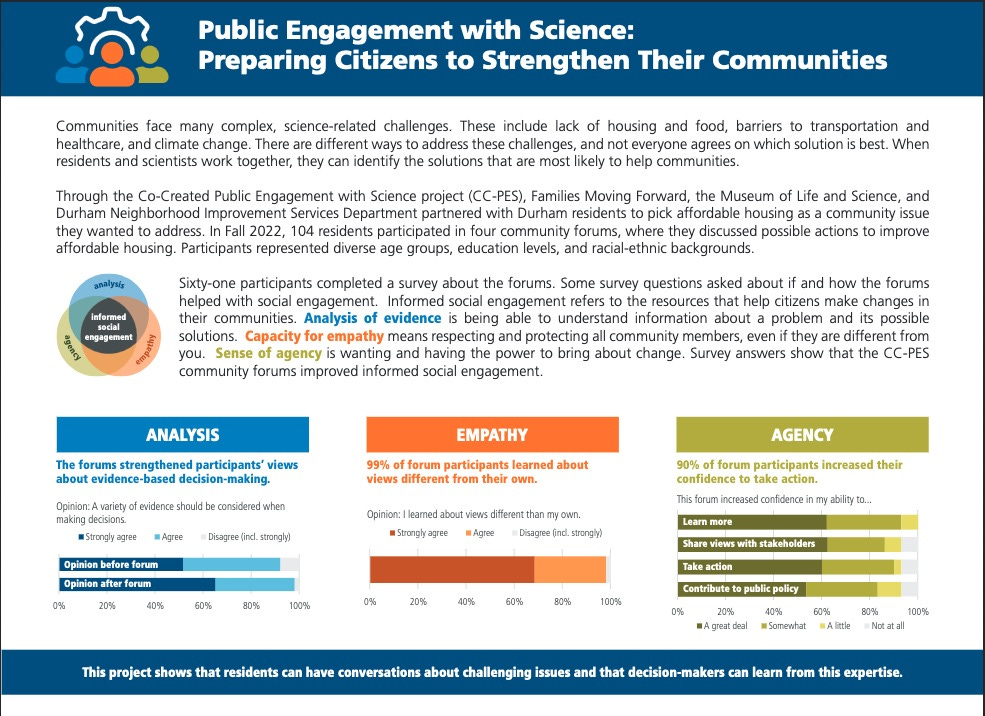
Since the slide above isn’t really readable, the other metric on the slide looked at interest in using analysis of evidence to understand and act on problems. The survey measured changes in participants’ agreement with the statement “a variety of evidence should be considered when making decisions.” This feels like an easy “yes” and, indeed over 90% of participants agreed with the statement before the forum. However, the forums increased the strength of people’s convictions. The percent who “strongly agreed” with the statement from (again squinting at the graph) ~50% before the forum to ~ 65% after.
Museums: Your Turn
Name a problem in your community. Obviously, it is easy to find people lined up on “opposite” sides of solution discussions – and differing definitions of the problem. But, get a bunch of people in a room, give them access to data and to a spectrum of well-reasoned opinions (and hopefully some snacks). Then ask them to discuss some well-honed questions, and good things happen. Good conversations and uplifted spirits at the very least; increased conviction to take action on a good day.
As I described in my post about Hope, Empathy, and Optimism, I’ve seen it first-hand using a role-playing game developed by the European Network of Science Centres & Museum’s (Ecsite). We museum people have the skills to create these potentially community-changing experiences – they “just” need the time and support. The question becomes how do you get that museum support? If a science museum can dive into affordable housing policy and a history museum into climate resiliency work, surely many more museums can tie a critical local issue back to their mission. If your museum has a well-honed mission statement like these:
“that the future may learn from the past”
~ Colonial Willamsburg
We ignite joy, wonder, and curiosity by creating powerful learning experiences for children and adults.
~ Children’s Museum of Indianapolis
Our mission is to enrich lives through the visual arts.
~ Oklahoma City Museum of Art
The implied coda is “to make a better world.” So don’t let “mission drift” fears be the stumbling block. If an issue is important to a community that you care about you should be able to find a tie to mission. The better question is “Can we add unique value to this conversation (and make a better world)?” There are plenty of issues around just beyond the museum grounds. Surely there is one worth tackling with your unique resources.
~ Betsy1
The Planning-Curious Museum Person
Sharing stories and ideas for other Planning-Curious Museum People and for Museum-Curious Planning People.
If you’re already involved in a museum-planning collaboration, tell me about it! Interested in expLoring a collaboration with me? Let’s talk! betsy@exploringexhibits.com
I am the founder of expLoring exhibits & engagement. I’ve got over 20 years’ experience in project management and exhibit development in multidisciplinary, indoor and outdoor museum settings. My services include exhibit master planning, content and interactive development, evaluation, and writing, with a focus on hands-on STEM. I also offer staff training in exhibition planning, formative evaluation, and prototyping. My special interests include multi-institutional collaborations, peer-to-peer professional development, and of course – collaboration with municipal planning practitioners.

